Predictions using Vertex AI

In this lesson, we’ll describe batch and online predictions.
We’ll also describe obtaining predictions using
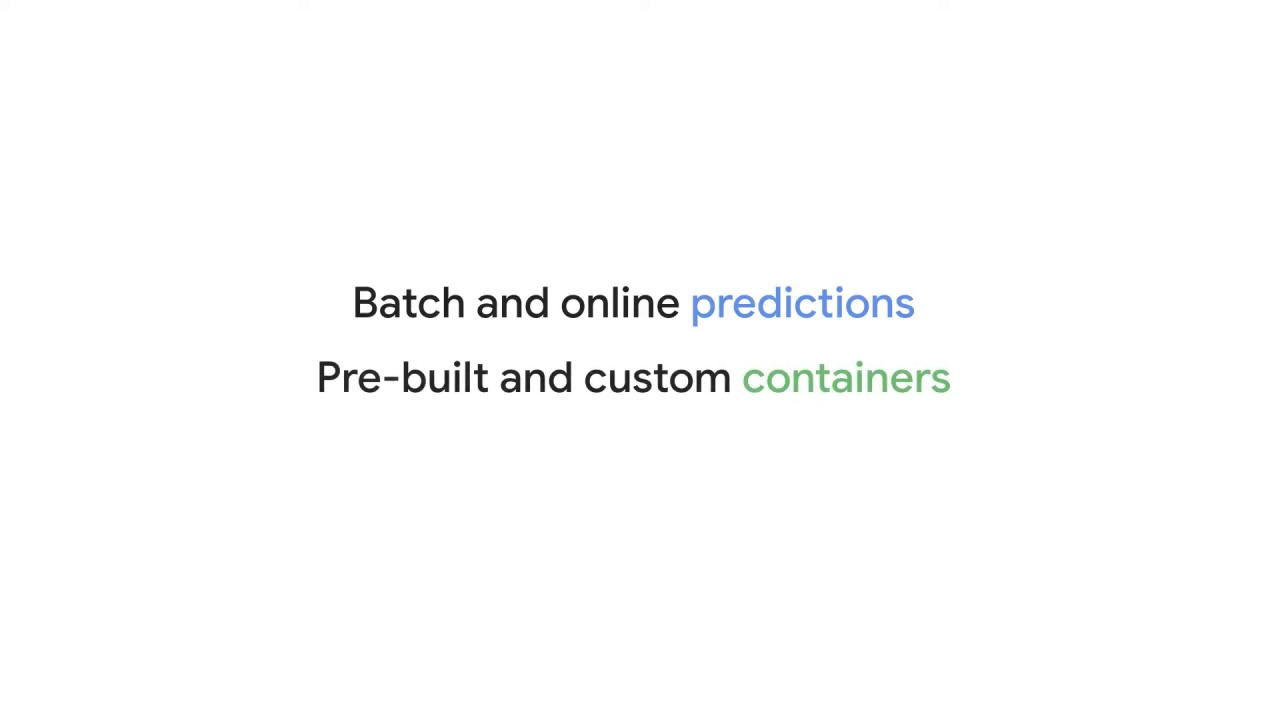
pre-built and custom containers.

Vertex AI provides predictions services for:

batch predictions,
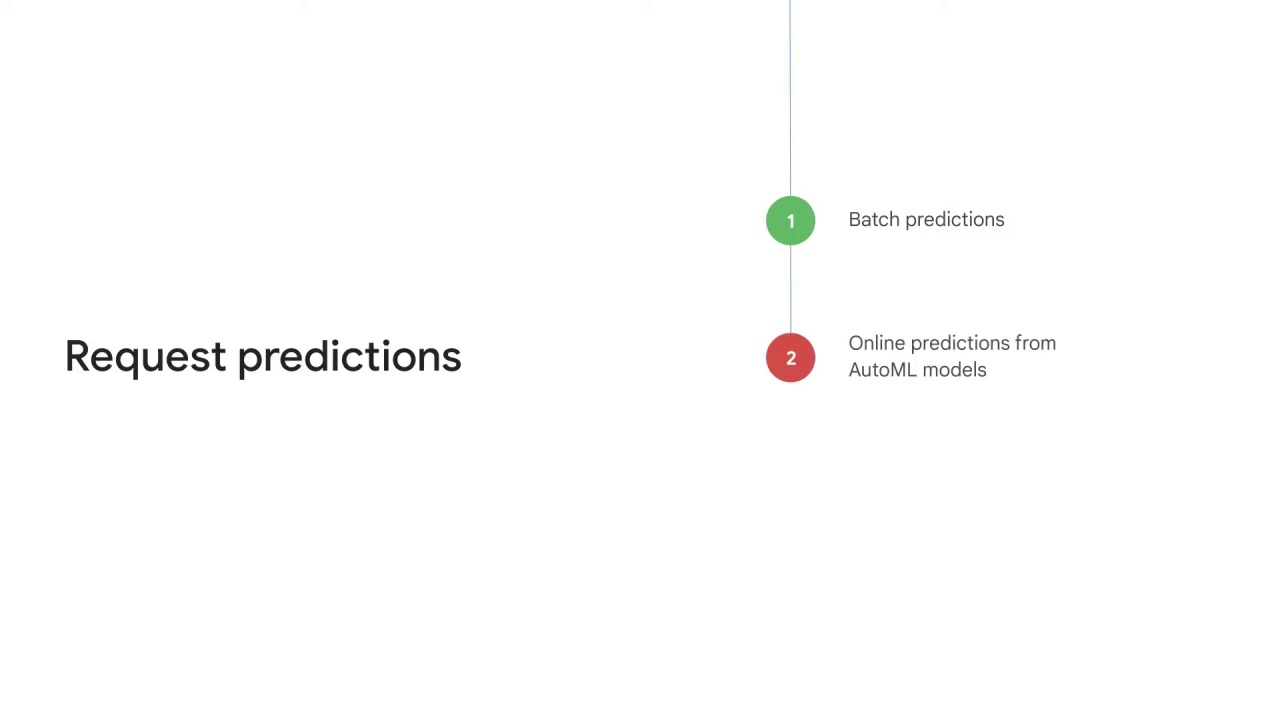
online predictions from AutoML models
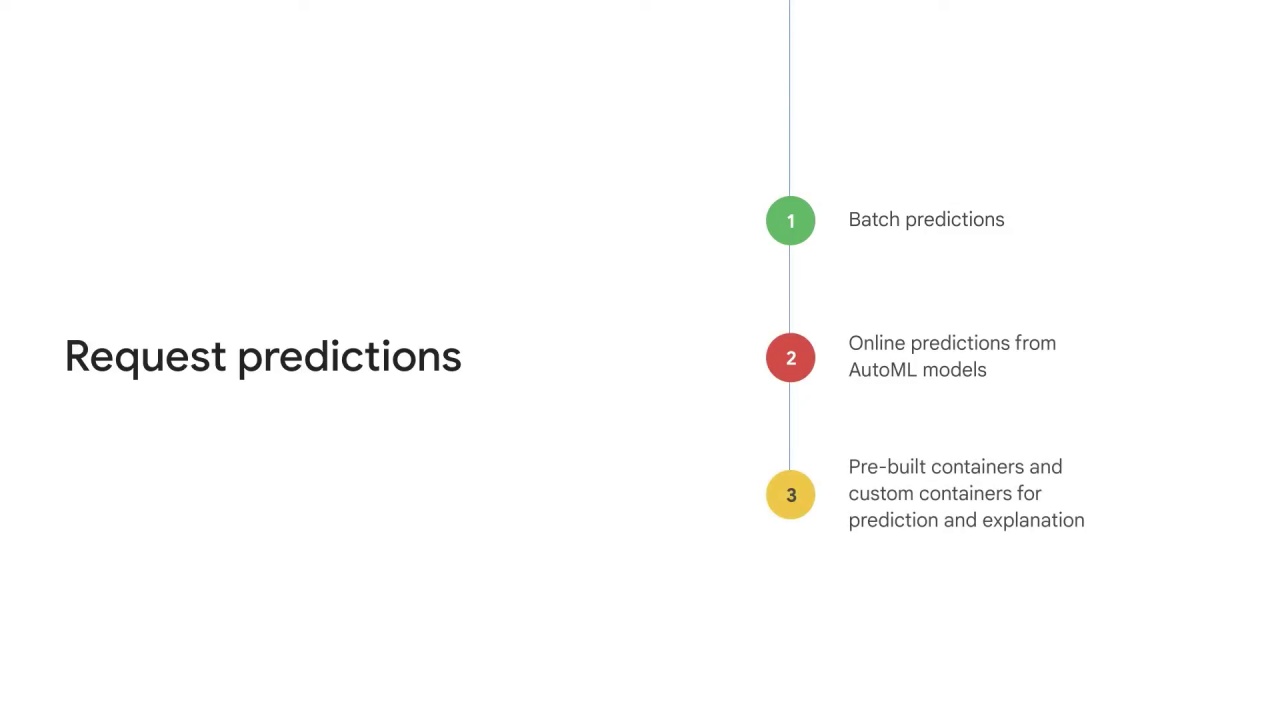
and pre-built containers and custom containers for prediction and explanations.

When you’re satisfied with your model’s performance during the validation cycle, it’s time to deploy your model .
Perhaps that means production scale usage or maybe it’s a one-time prediction request.
Depending on your use case, you can use your model in different ways.

Batch prediction lets you make many prediction requests at once.
Batch prediction is asynchronous, which means that the model will wait until it processes all of the prediction requests before returning a CSV file or a BigQuery table with prediction values.
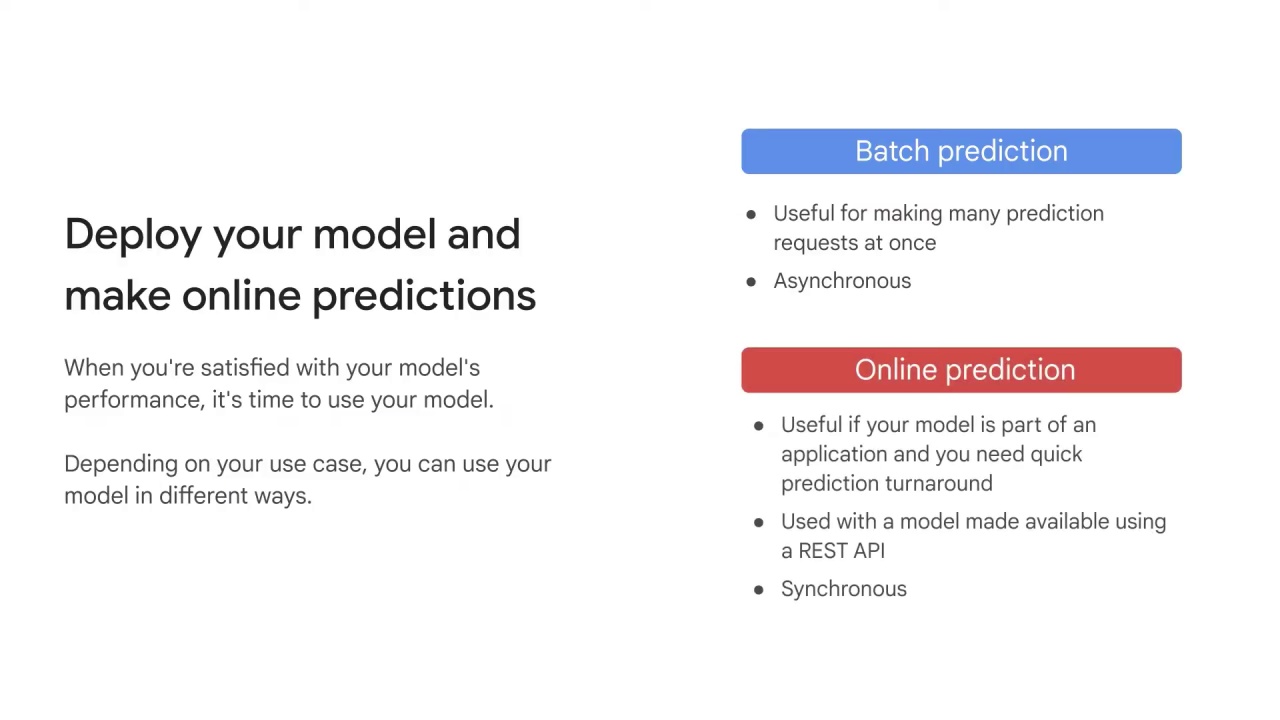
Online prediction is useful if your model is part of an application, and parts of your system are dependent on a quick prediction turnaround.
Deploy your model to make it available for prediction request using a REST API.
Online prediction is synchronous in real time, which means that it will quickly return a prediction but only accepts one prediction request per API call.

Vertex AI provides Docker container images that you run as
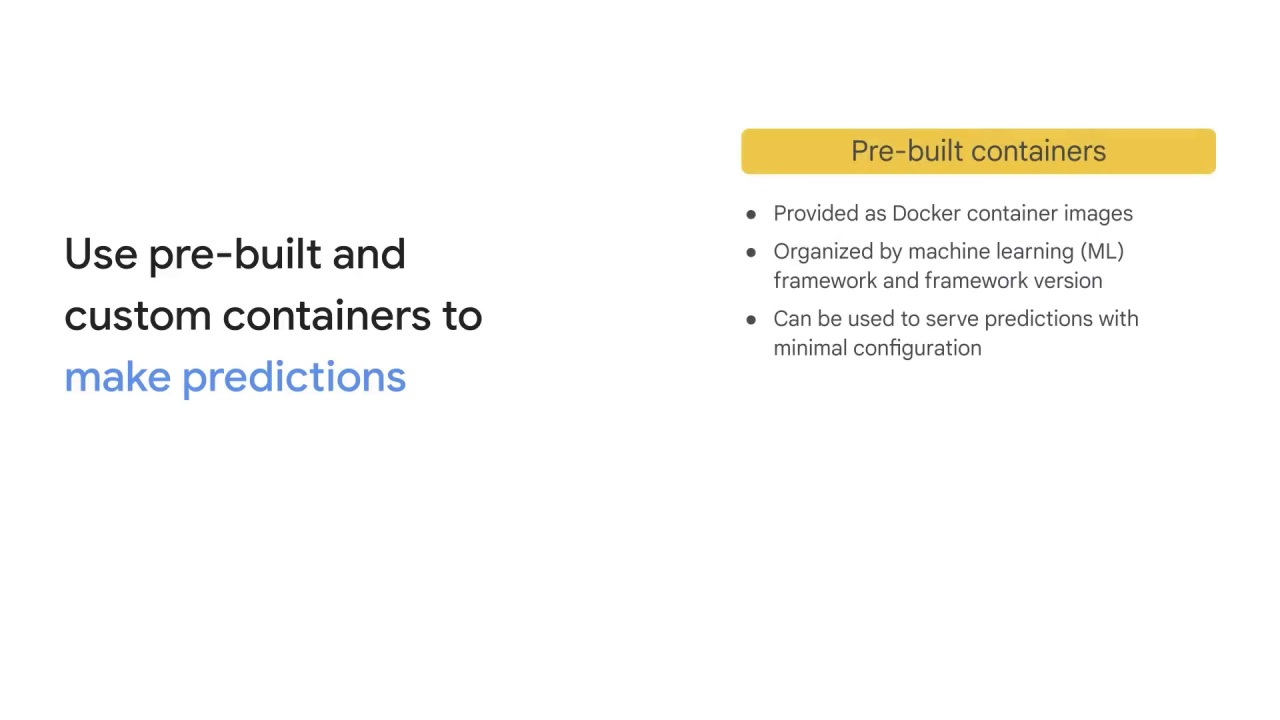
pre-built containers for serving predictions and explanations from trained model artifacts.
These containers which are organized by machine learning framework and framework version, provide HTTP prediction servers that you can use to serve predictions with minimal configuration.
In many cases, using a pre-built container is simpler than using a custom container.
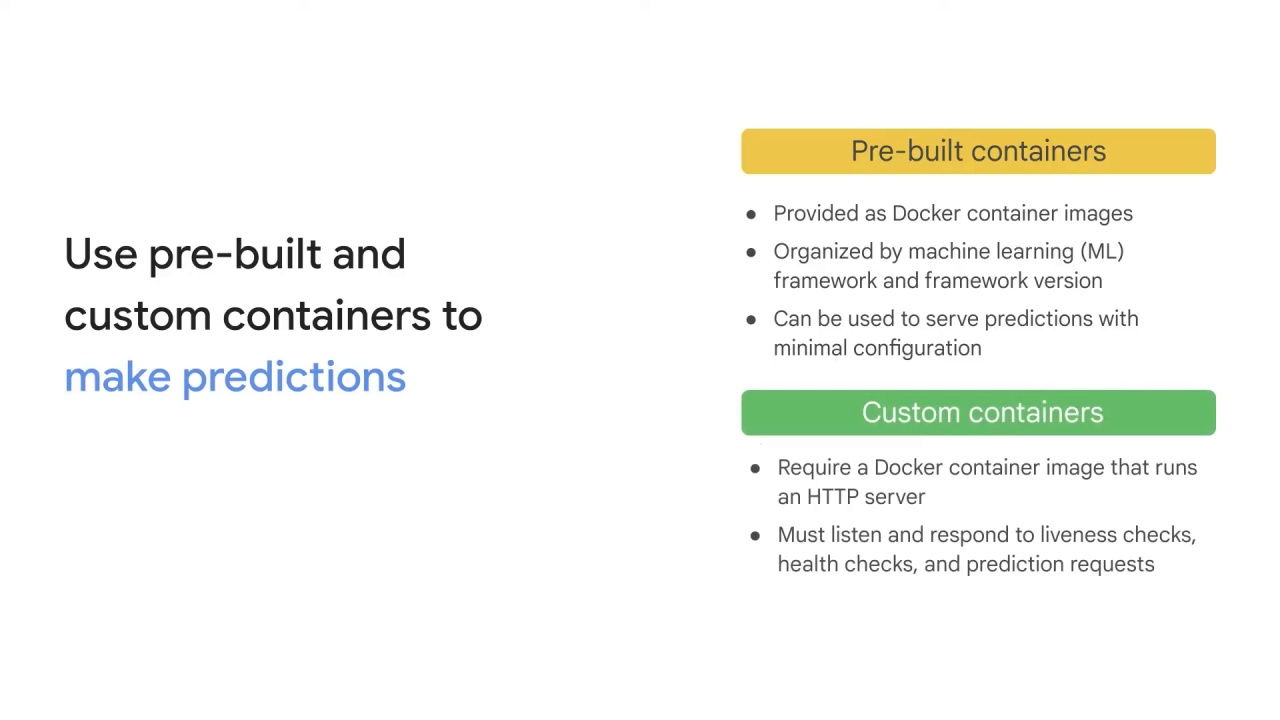
To use a custom container to serve predictions from a custom-trained model, you must provide Vertex AI with a Docker container image that runs an HTTP server.
Specifically, the container must listen and respond to liveness checks, health checks, and prediction requests.
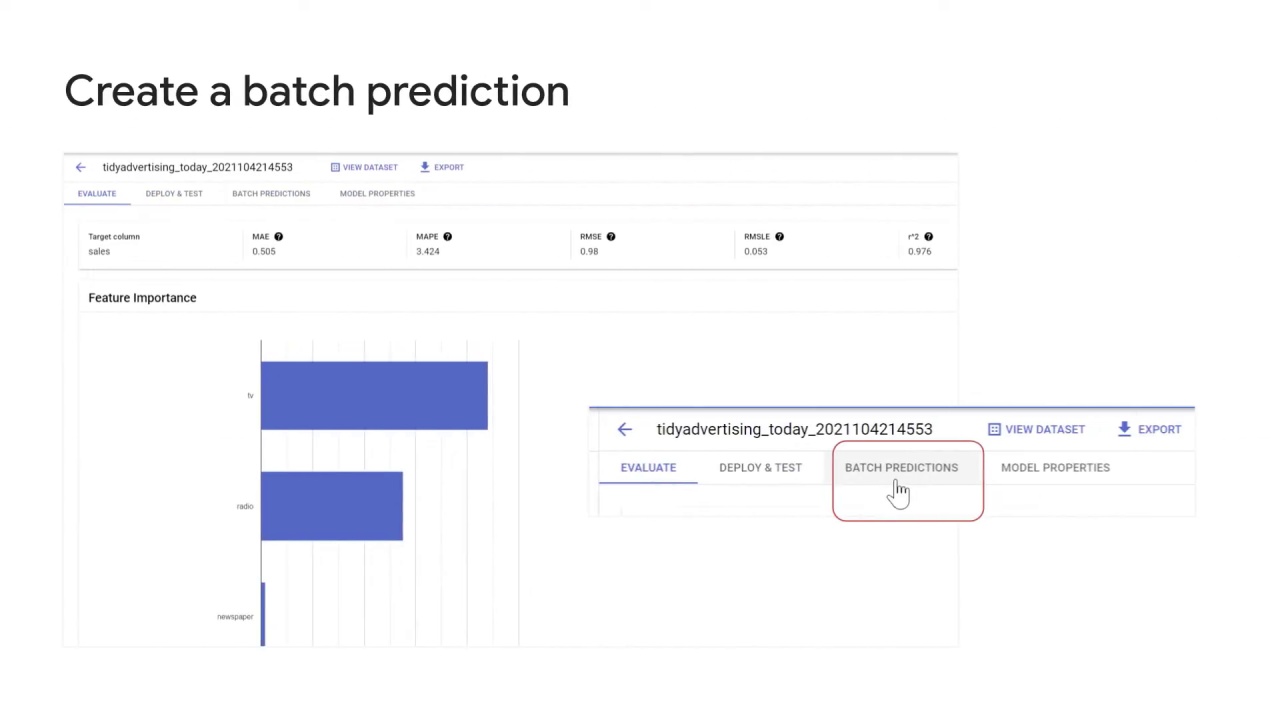
Let’s walk through an example of an AutoML batch prediction.
To create a batch prediction, select your model from the model page and then select batch prediction.
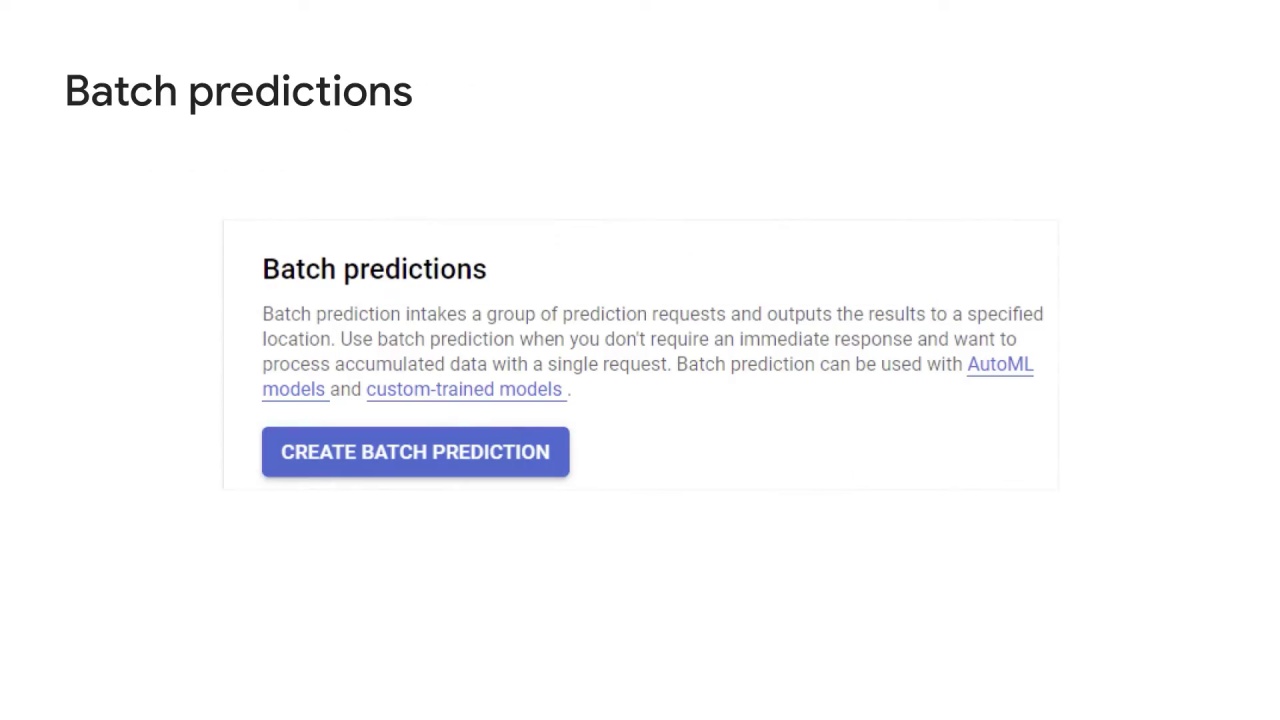
Batch prediction intakes a group of prediction requests and outputs the results to a specified location.
Batch prediction can be useful with AutoML models and custom-trained models.
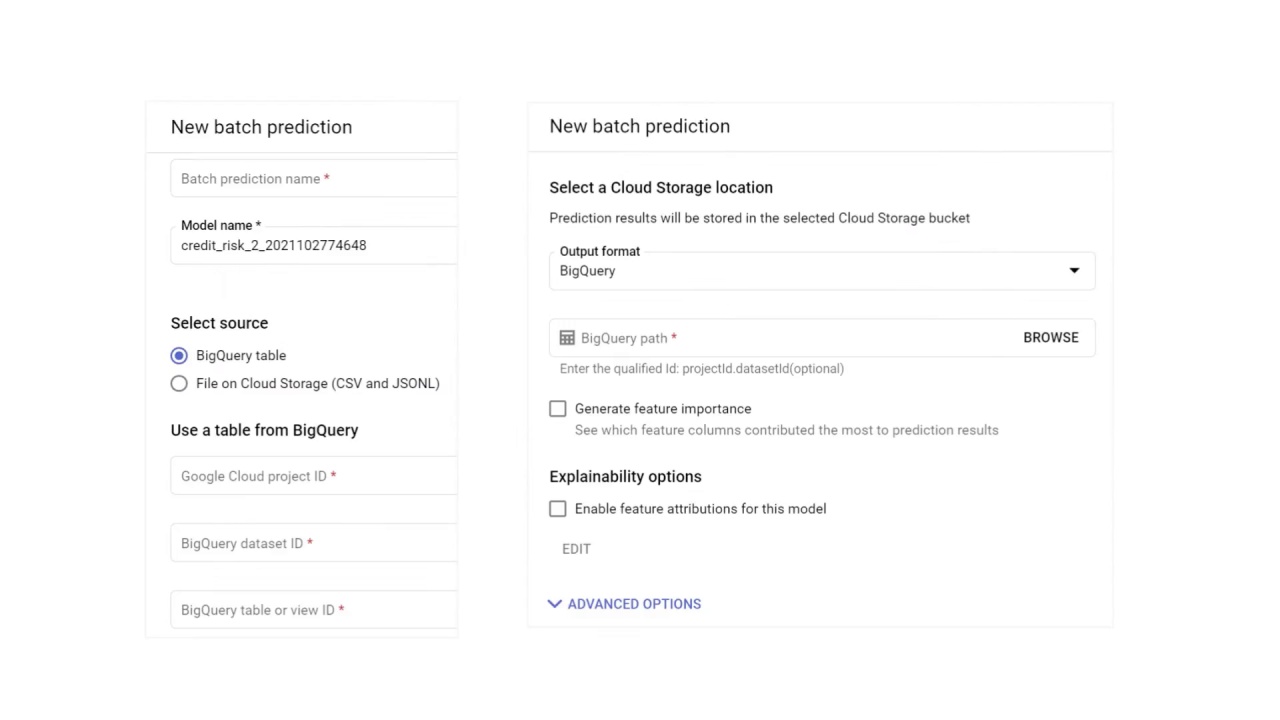
Requesting a batch prediction is an asynchronous request as opposed to online prediction which we said earlier is a synchronous request.
You request batch predictions directly from the model resource.
You don’t need to deploy the model to an endpoint.
For data types that support both batch and online predictions, use batch predictions when you don’t require an immediate response and want to process accumulated data by using a single request.

To make a batch prediction, you specify an input source and an output location where Vertex AI will store the prediction results.
The inputs and outputs depend on the model type that you’re working with.
For example, batch predictions for the AutoML image model type require an input JSON file and the name of a cloud storage bucket to store the output.
Note, if you select the data source as a BigQuery table, you need the following information;
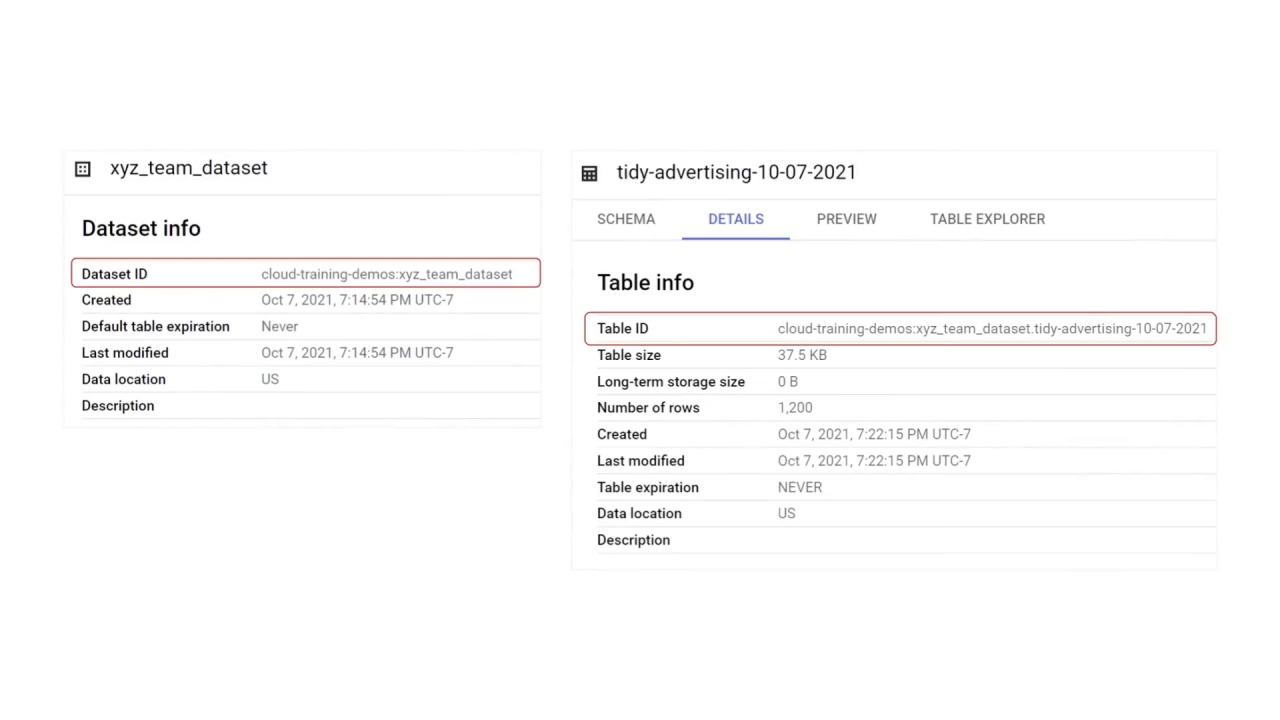
dataset ID, and table ID.
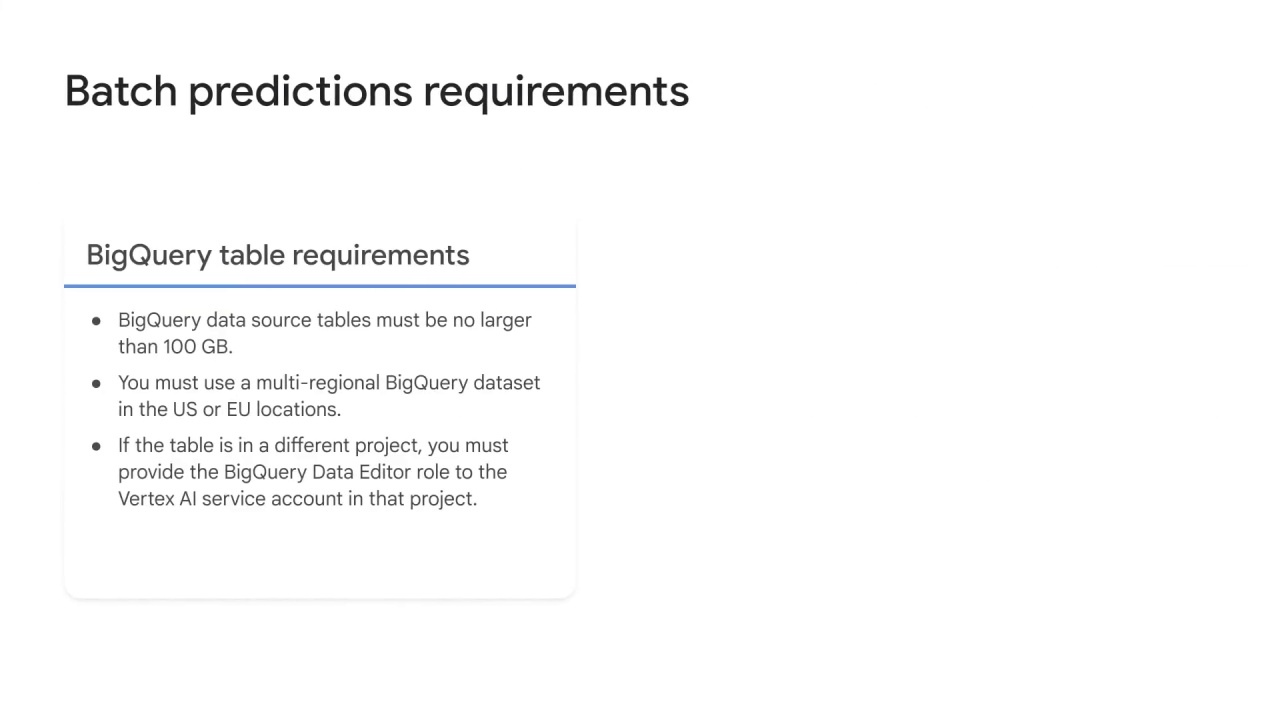
For BigQuery table requirements, BigQuery data source tables cannot be larger than 100 gigabytes.
And you must use a multi-regional BigQuery dataset in the US or EU locations.
If the table is in a different project, you must provide the BigQuery Data Editor role to the Vertex AI service account in that project.
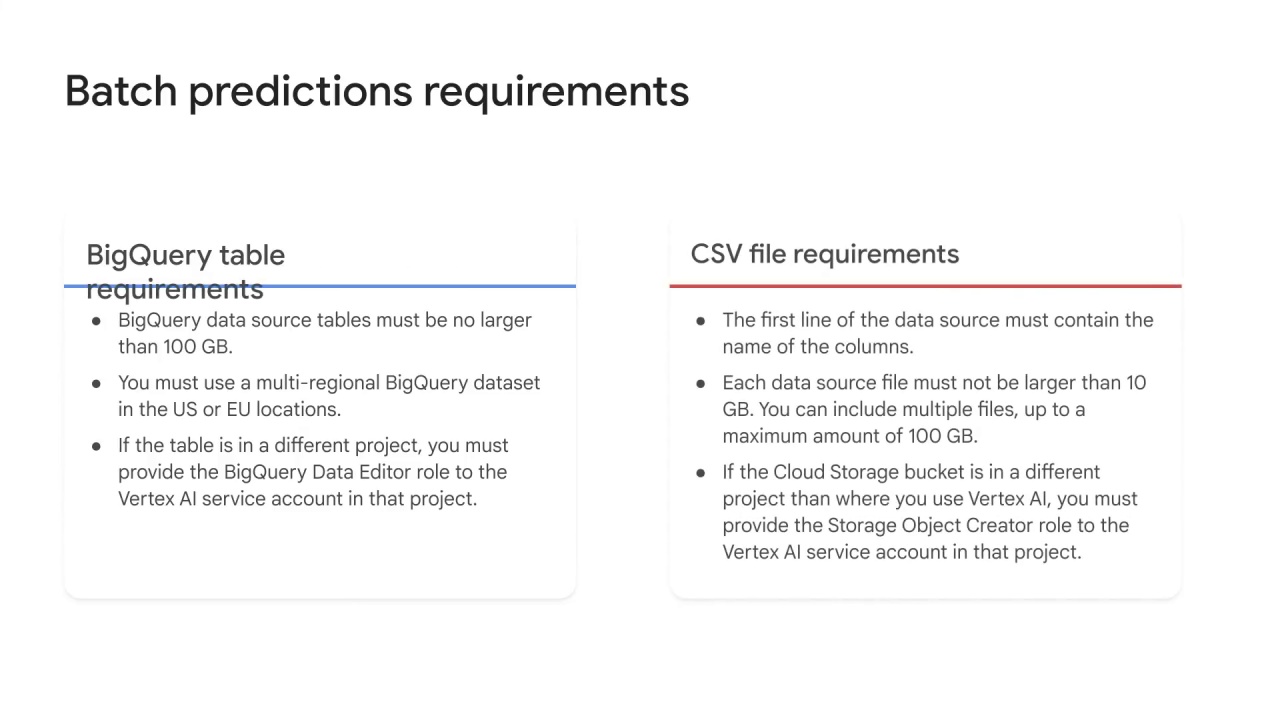
For CSV file requirements, the first line of the data source must contain the name of the columns.
Each data source file cannot be larger than 10 gigabytes.
You can include multiple files up to a maximum size of 100 gigabytes.
If the cloud storage bucket is in a different project where you use Vertex AI, you must provide the Storage Object Creator role to the Vertex AI service account in that project.

In addition to creating a batch prediction in the console, you can also create a batch prediction and a workbench notebook via the command line.
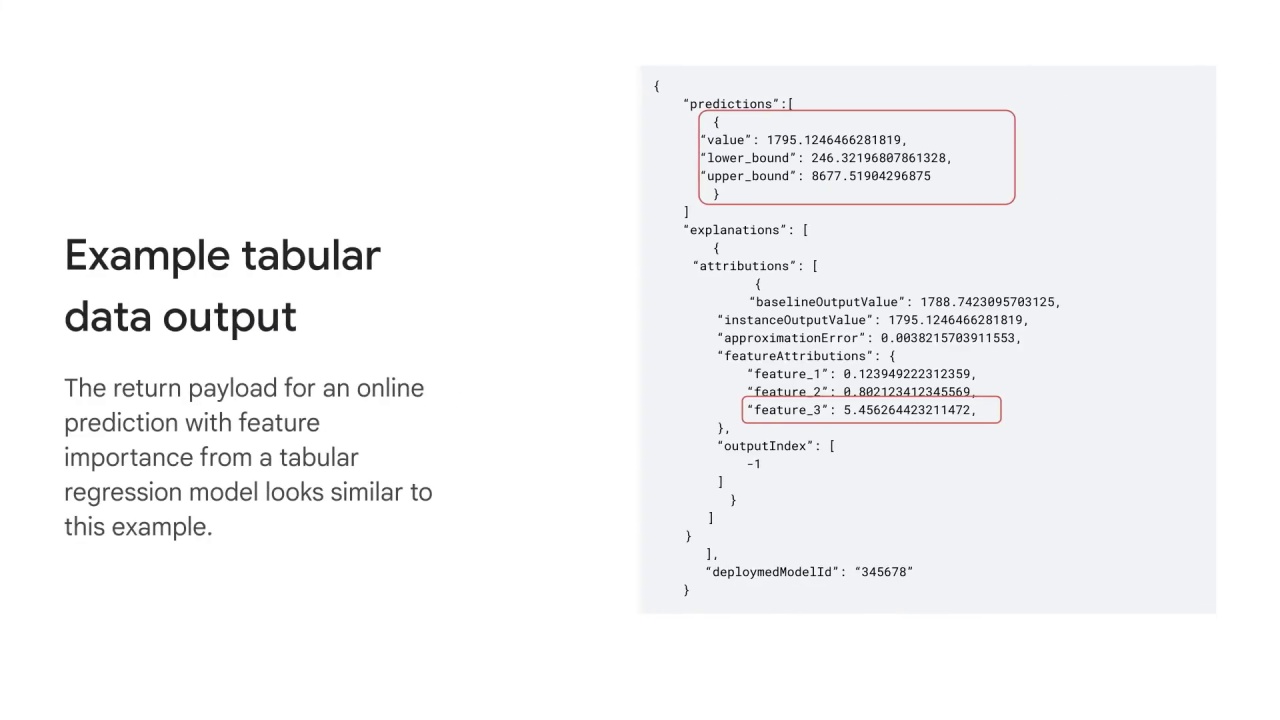
Vertex AI sends the batch prediction output to your specified destination.
Retrieving your results depends on the destination that you specified for the batch prediction, either BigQuery or cloud storage.
The return payload for an online prediction with feature importance from a tabular regression model looks similar to the following JSON example.
The instance output value of 1795.12 is the predicted value with the lower bound and upper bound fields providing the 95% confidence interval.
The baselineOutputValue field contains the baseline prediction score, in this case, 1788.74.
The feature that contributed most strongly to this result was feature three.
